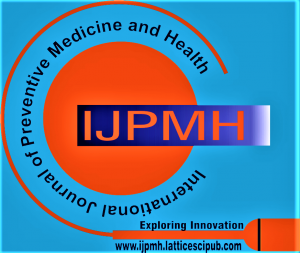![]()
A Framework for the Prediction of Eye Diseases using Deep Learning Models
Madhab Paul Choudhury1, Jagannibas Paul Choudhury2
1Madhab Paul Choudhury, Research Scholar, Department of Computer Science & Engineering, IIT ISM Dhanbad, Jharkhand, Kolkata (West Bengal), India.
2Dr. Jagannibas Paul Choudhury, Retired Professor (IT), Kalyani Government Engineering College, Kalyani, West Bengal, Professor, Department of Computer Science & Engineering, Narula Institute of Technology, Kolkata (West Bengal), India.
Manuscript received on 23 May 2025 | First Revised Manuscript received on 24 July 2025 | Second Revised Manuscript received on 17 October 2025 | Manuscript Accepted on 15 November 2025 | Manuscript published on 30 November 2025 | PP: 7-32 | Volume-6 Issue-1 November 2025 | Retrieval Number: 100.1/ijpmh.E110305050725 | DOI: 10.54105/ijpmh.E1103.06011125
Open Access | Ethics and Policies | Cite | Zenodo | OJS | Indexing and Abstracting
© The Authors. Published by Lattice Science Publication (LSP). This is an open-access article under the CC-BY-NC-ND license (http://creativecommons.org/licenses/by-nc-nd/4.0/)
Abstract: Artificial Intelligence (AI) has significantly enhanced various aspects of our lives, providing practical solutions to complex problems and narrowing the gap between real-world challenges and business needs. Within the realm of AI, innovative technologies such as machine learning and deep learning have revolutionised the way we analyse data, make informed decisions, and respond to complex situations, all with the goal of understanding and resolving them efficiently. As data generation and storage continue to expand rapidly, these technologies have become essential in managing data analytics, storage systems, and decision-making frameworks. Through digital transformation, industries are being reshaped, and global services—especially in fields such as healthcare—are being enhanced to improve the quality of human life. The eye is considered the most important sensory organ for humans, playing a vital role in their overall ability to interact with the world. Unfortunately, many individuals in both rural and urban areas suffer from eye conditions such as cataracts, glaucoma, ocular hypertension, bulgy vision, etc., that affect their vision. There are various causes, including age, diabetes, and genetic and hereditary factors. Modern lifestyles, which have led to increased use of displays for digital devices, are also a factor affecting vision. This study aims to develop a predictive model for vision-related diseases by leveraging medical data and analyzing the influence of various contributing factors using deep learning methodologies. Early detection of eye conditions is crucial to prevent serious complications, as timely diagnosis plays a vital role in ensuring effective treatment. Conducting thorough assessments to identify potential indicators of eye diseases is highly encouraged. Deep learning and artificial intelligence (AI) significantly enhance the ability to detect these illnesses at an early stage. The purpose of this research is to lay the foundation for discovering a robust and adaptable solution. Specifically, the study focuses on reviewing the classification of eye diseases using advanced deep learning models, such as Custom CNN (Convolutional Neural Network), VGG16, ResNet, InceptionV3, GoogleNet, EfficientNet B2, MobileNet, and DenseNet 121. The proposed classification framework follows a series of steps: initially, it involves gathering widely accessible datasets related to eye diseases and performing data preprocessing to ensure consistent experimental conditions. The primary objective is to train the model to accurately identify symptoms of eye diseases, rather than optimizing for a narrow subset of data. Given the success of deep learning in image classification and object recognition tasks, the research emphasizes these modern techniques over conventional handcrafted approaches.
Keywords: Custom CNN (Convolution Neural Network), VGG16, ResNet, InceptionV3, GoogleNet, Efficient Net B2, MobileNet, DenseNet 121.
Scope of the Article: Health Care Management
